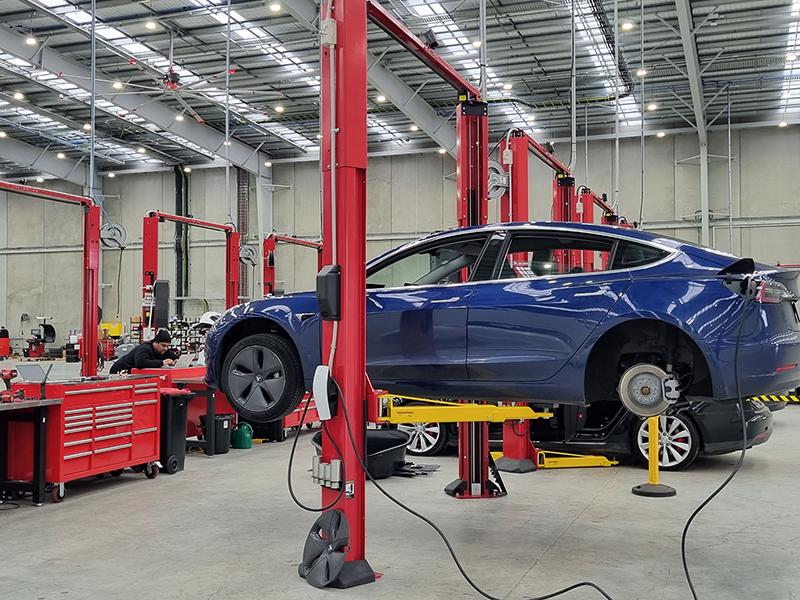This article is a true description of an AECS technical help desk problem, and how it was solved.
By H.P. Leijen (trainer/research)
Vehicle
2006 BMW 318i E90 four-cylinder engine with Vanos and Valvetronic.
Problem presented to the Help desk
This BMW came in with a misfire under load. We scanned it for codes, and it had a cylinder no.3 misfire fault code.
We replaced two coils, then all four coils, then spark plugs. This gave us a big improvement , but the engine still had a misfire under load.
We scanned it again, and it now hada Vanos (variable cam timing) code. We replaced the exhaust cam timing solenoid, and the fault code went. However, the engine still had a misfire under acceleration. We performed a compression test and a leak-down test, and both were OK.
We found that the eccentric shaft (Valvetronic shaft) feedback sensor plug was oily. We cleaned it and it ran perfect. Checked 30mins later – misfire back again.
If we unplugged the Vanos solenoid the misfire went away Same if we unplugged the Valvetronic actuator motor. The workshop working on the car had also lifted the rocker cover to see if there were any mechanical issues, but nothing untoward was found.
The workshop decided to drive the car over to a friendly colleague who owns an ATS 4 channel scope.
Measure
A recording was posted to the AECS technical help desk, for our opinion. The recording was made of the crank shaft sensor, an injector, coil 3 and coil 4, and shows that cylinder 3 moves from firing to a misfire when the engine accelerates.
It needs to be noted that the crankshaft sensor recording by itself will not reveal the misfire; it was not until the crankshaft pattern’s speed was transformed in an analogue line that the misfire became visible.
Description of significant points:
- The coil of cylinder 3 ignites the mixture in the combustion chamber, just before the throttle is opened. The rpm line increases just after ignition.
- Coil 3 fires, but no combustion takes place, the rpm line does not increase, the engine speed actually decreases (misfire).
- The coil of cylinder 4 ignites the mixture, the rpm line rises as expected, the crank shaft speeds up (acceleration).
- Coil 3 fires again, with no increase in crank shaft speed (misfire).
To analyse the ignition patterns for quality, despite the fact that the coils and plugs have been replaced, we zoom in on a section of the pattern where the engine has had a few misfires already.
In the zoomed-in section on this recording, it is very clearly visible that the MSD ignition patterns of cylinder 3 and 4 are very similar, almost eliminating an ignition problem on cylinder 3.
It needs to be noted that MSD ignition is normal on BMW at lower revs. MSD ignition is one of the subjects we cover in the EMS 1-1 training course we recently held in Auckland (Oct ’15; it was sold out).
Just to be sure, the coil and plugs were swapped between cylinder 3 and 4 but the misfire stayed with cylinder 3. Measuring the injector patterns of cylinders 3 and 4 revealed no difference in injector pattern.
During hard acceleration we measured the pressure in the intake manifold to see if perhaps one of the intake valves was leaking back into the manifold, so that for example cylinder 3 would lose compression under load (long shot).
The pressure in the manifold dipped rather than rising, eliminating thoughts that the intake valve was leaking and blowing back into the manifold during acceleration.
Please understand that this is a variable valve lift engine (Valvetronic), where the throttle is wide open during normal idle and acceleration. Only the intake valve opening (lift) increases or decreases. So in low level thinking you would expect the pressure in the manifold to stay steady at ambient. However air dynamics, pulsing air of a breathing engine, causes pulses in the manifold as can be seen in this recording during acceleration.
Cam timing
The next thing to check was the cam timing as the technician told us that when he disconnected the Vanos the misfire went away.
We checked the cam timing adjustment effort done by the ECU by looking at the duty cycle to the control solenoids on the ATS scope. If anything is wrong with the cam timing you will see that in the control effort of the ECU. We cover this in great detail in the EMS 1-3 training.
Both cams were adjusted comfortably by the ECU, so we could rule that out.
Electronics fine
At this stage we were very confident that the electronics of this engine were fine, with an exception that the injectors were not swapped from cylinder 3 to another cylinder. The car was handed back to the first garage with the “electronics are fine” verdict.
The first workshop swapped the injectors, after which they contacted us and performed some live data recordings to go over a few checks again with the Launch.
Live data
We asked for a recording of the APS, rpm, intake valve lift and cam positions. He posted the Launch Pro3 live data recording to us.
The short recording shows that during acceleration the Intake valve lifts, and the cam timing of both cams shifts. Each of the graphs was zoomed in to see more detail. The Launch Pro3 Intake valve lift during gentle acceleration recording is only the graph of the valve lift.
.
Again nothing in this recording pointed to anything wrong with the electronics.
The conclusion was that the problem was a mechanical issue. We asked the technician to remove the rocker cover to check cam lobes, valve springs and the valve lift mechanism, and check perhaps the intake manifold to look for carbon build up.
One seemingly valid comment from the technician was that “if it was a mechanical fault I would assume that the misfire would be there all the way through the rev range or at least consistent”.
With the dynamics of an engine that it not always true, but the fact remained that there was
no electronic fault we could see.
Mechanical
A short time later the technician reported to us that he had found the issue; “On further and deeper inspection we removed the eccentric shaft (Valvetronic shaft) and found no.3 had major wear on the area where the top of the levers run. Also a number of lobes had a few flat spots.
We replaced four levers and replaced the eccentric shaft and reset values. The vehicle ran perfect at idle and there was no misfire under load.
So Why?
Why did the misfire go away when the Vanos and Valvetronic plugs were disconnected? In the EMS 1-3 AECS training we explain how the system goes into limp home mode with the systems in fault. Limp home in this instance means that the Valvetronic system moves the intermediate levers so that the intake valves will go to full lift, as in a normal engine. In this limp home situation the engine torque is only controlled by the electronic throttle butterfly, also as on a normal engine.
Conclusion
The wear on the shaft was not easily visible with the rocker cover removed. The damage to the shaft was not extreme, and only on cylinder 3. We have to assume that something went wrong with the hardening of the shaft or that something went wrong with the lubrication.
The most important part is that the testing revealed conclusively that there was no electronic fault.
The diagnostician and technician both had invested in AECS technical support and equipment. In the end the ATS oscilloscope was the tool that made us at the help desk confident in our conclusion.
In the EMS 1-3 training we deal with both the Vanos and Valvetronic systems of various brands.






